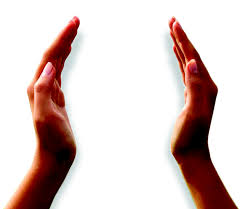How Much To Touch
How Much To Touch
The reason it even occurred to me to write this post was watching myself during the Long Stretch series of manual cueing videos we have been releasing. I realized that from an outsider the possibility was that it would seem like I was touching A LOT. Perhaps even too much. It seemed so TO ME! Now I know why I was touching a lot and that’s because I was giving various examples of effective touch cues, spotting, and feedback over the course of complex movements, but what I also came to realize is that I would rarely use ALL of those touch cues together on one student.
So, I thought perhaps it would be wise to set some ground rules or a least offer some guidelines about How Much To Touch.
First, I want to share a very interesting conversation I recently had with a student around this topic in hopes that it will also help shed some light around how different people respond to touch in a myriad of ways not all of which are helpful.
A little background: On one or two occasions working with this student I would have had a hand on her helping her to feel the specific location of movement initiation. Both instances it was a sustained touch in order to keep her present with where to continue to move from. Both times she politely and firmly asked me to “Can you take your hand off me there I can’t feel what I’m supposed to feel with your hand there.”
Point taken.
However, I had also heard her say this to other teachers repeatedly through the several years she’s been coming to our studio. I knew it to be a particular preference of hers and made a conscious effort to not prolong my touch when working with her.
Our conversation: I recently had the pleasure of working more frequently with this student and during our last session she expressed her thought process around this particular issue saying that it had become very clear to her that there was a difference between me as an experienced teacher and some of the other teachers she had been working with who were less “in tune” with how to touch.
Her experience was that with most teachers their touch was a distraction away from her own internal or felt-sense of what she should feel or could feel. That because they were uncertain or touching just for the sake of touching nothing else beside the touch was communicated. And that’s why she often found herself asking them to stop touching her.
Her experience with me, however, was primarily — yet not always — different in that she felt as though my hands were helping her to feel or identify something deeper; that there was purpose and intention communicated rather than just the surface need to touch because that’s what one is supposed to do.
I had already kind of gathered these things about her, but it helped me to further understand how touch is not just about our own skill level (intention, clarity, purpose etc.) but very much about the individual in front of us. It takes more than just practice touching, it takes practice LISTENING to the body you are touching and we can do this in many different ways.
How Much To Touch:
- Begin by asking permission in the first place (Obviously, I know).
- Experiment with one type of touch and take note of the following:
- How does kazinomons.com your student respond physically?
- Does their body tighten up?
- Do you feel a change in the tissue?
- If so, in what way(s)?
- Do you feel resistance, tension or tightness around the area you are touching?
- Do they soften into the touch or activate appropriately right away?
- Or does it take them a little while to respond?
- If so, in what way(s)?
- Watch their face and notice flinching, looks of discomfort, annoyance, or eyebrows raising (ah ha moments) or furrowing.
- Ask them how the touch is effecting them:
- Do they feel the sensation you are trying to get them to feel?
- Does it feel like there is more flow, ease or connection when they really feel what you are asking?
- How does kazinomons.com your student respond physically?
- Be clear yourself about whether or not you are:
- Assisting
- Spotting
- Informing/insighting
- Adjusting
- Don’t be afraid to tell them what you are doing and why.
- Take note of which type of touch does your student seem to respond to best? (Begin to experiment with more than one type of touch).
- BE VERY AWARE of how your student responds and ADJUST ACCORDINGLY!!
- If you don’t know what to do or how to work with a particular student ASK!! Don’t just keep doing the same thing because you don’t know what else to do.
- SIGN UP FOR AND WATCH the Skillful Teaching Manual Cueing Series! 🙂
- If you don’t know what to do or how to work with a particular student ASK!! Don’t just keep doing the same thing because you don’t know what else to do.
Developing your skills in manual cueing takes not only time, but patience and a willingness to be fully present. This may seem obvious, but it’s certainly not easy. Notice if you take touch cueing for granted or see it as something you could do, but generally don’t because it’s too complicated, unfamiliar or uncomfortable. Ask yourself how you might start to venture not only into HOW to touch, but WHY to touch.
It’s a powerful tool and I hope you find some value in our discussion around it here.


 How are you showing up? Why are you showing up? Why do you teach? What IS teaching? Why do you care? This is Skillful Teaching: A Whole-person approach to being an expert teacher, not an expert technician. There's a difference. Want to know what it is?
How are you showing up? Why are you showing up? Why do you teach? What IS teaching? Why do you care? This is Skillful Teaching: A Whole-person approach to being an expert teacher, not an expert technician. There's a difference. Want to know what it is?
